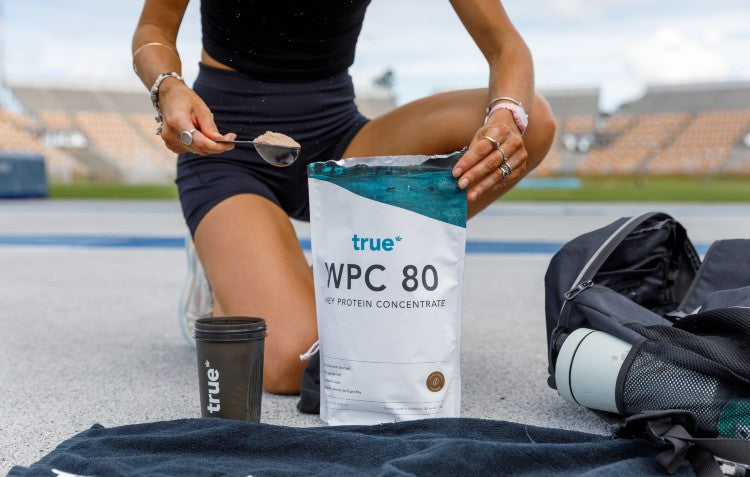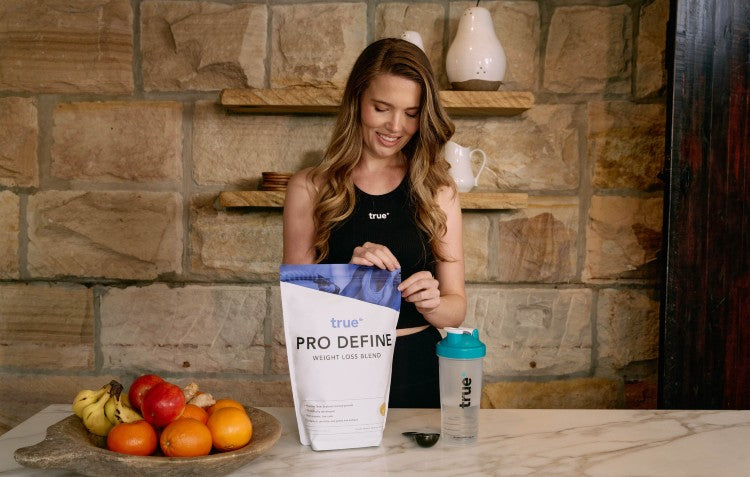You’re standing in the supermarket aisle, holding two products that both claim to be healthy. How do you decide? Reading a nutrition label isn't just about knowing what the words mean; it's about having a strategy to make a quick, confident choice that’s right for you.
This guide is your strategy. We’ll show you how to scan any label in under a minute by focusing on what truly matters for your personal health goals.
Want a deep dive into every term on the panel?
See our foundational guide: Nutrition Labels Decoded
The 3-Goal Framework: A Quick Scan for What Matters Most
Let’s cut through the noise. By identifying your primary goal, you can instantly focus on the 2-3 most important data points on any label.
If Your Goal is: Weight Management
Your focus is on calorie quality and staying full.
-
Check Serving Size vs. Total Calories: First, look at the ‘servings per package’. Be honest about how much you’ll eat and calculate the true calorie cost before you commit.
-
Compare Protein & Fibre vs. Sugar: For lasting fullness (satiety), look for products where the grams of protein and dietary fibre are high, and the grams of sugar are low. This is your best defence against cravings.
-
Scan the First 3 Ingredients: If sugar (or synonyms like glucose, fructose, syrup) is one of the first three ingredients, it’s a key component of that food, regardless of its health claims.
If Your Goal is: Build Muscle & Aid Recovery
Your focus is on high-quality building blocks and clean fuel for repair.
-
Prioritise High-Quality Protein: Use the ‘per 100g’ column to compare protein content fairly. On the ingredients list, ensure the protein comes from a quality source like whey, casein, or a complete plant blend.
-
Assess the Energy Source: Muscle repair needs fuel. Look for a healthy amount of carbohydrates, but check that they aren’t just coming from ‘added sugars’. Quality carbs support recovery; sugar can hinder it.
-
Demand a Clean Profile: Look for what’s not on the ingredients list. A great product is free from artificial sweeteners, colours, and unnecessary fillers that can add stress to a recovering body.
If Your Goal is: General Wellness & Clean Eating
Your focus is on purity and simplicity. The ingredients list is more important than the numbers.
-
Read the Ingredients First: Is the list short? Can you pronounce the words? Look for whole, recognisable foods. This is the single fastest indicator of a high-quality, minimally processed product.
-
Check the Sodium Level: Packaged foods can be high in sodium. As a guide, aim for products with less than 400mg of sodium per 100g.
-
Look for True Claims: Ignore vague "health halos". Look for meaningful, regulated claims like "no added sugar," "preservative-free," or "good source of fibre."
Let's Compare: Two Protein Powders, A Clear Difference
Now, let's apply this framework to a product category we know best. At first glance, two vanilla protein powders might seem alike, but their labels reveal a very different story about their quality and purpose.
| Competitor Protein (Vanilla) | True Protein WPI 90 | |
| Energy |
499 kJ |
459 kJ |
| Protein |
26 g |
26g |
| Fat, Total |
0.3 g |
0.3g |
| Carbohydrates |
2 g |
0.7g |
| - Sugars |
0.9 g |
0.4g |
| Ingredients |
Whey Protein Isolate (91%), Flavours, Vegetable Gums (Guar Gum, Xanthan Gum), Anticaking Agent (Silica Dioxide), Sweetener (Sucralose), Salt, Digezyme®. |
Whey protein isolate (96%)(Milk), Organic inulin, Natural flavours, Emulsifier (Sunflower lecithin), Vegetable gum, Natural sweetener (Organic steviol glycosides), Vanilla bean powder. |
*Numbers are per serve
The Verdict:
The nutrition panels look almost identical, but the ingredients list tells the true story.
-
For Clean Eating: The difference is undeniable. The competitor’s list relies on artificial ingredients like sucralose, vague flavours, and a cocktail of texturizers and agents. In stark contrast, True Protein’s WPI 90 is built on a transparent list of premium, natural, and functional ingredients, including organic inulin (a prebiotic fibre), real vanilla bean powder, and natural sweeteners.
-
For Muscle & Recovery: Fuelling your body is about more than just macros; it's about the source and quality of what you consume. The competitor's artificial additives offer no functional benefit. True Protein's formula is built on superior ingredients, starting with high-purity NZ grass-fed whey, and is designed to support your body’s systems, not burden them.
This comparison proves that a nutrition panel only tells half the story. The truth about a product's quality is always found in its ingredients.
The One Recommendation for Every Goal
While this framework helps you make better choices with packaged foods, our most important advice is universal: prioritise a diet rich in whole, unprocessed foods. No label can replace the nutritional quality of fresh vegetables, fruits, quality meats, and legumes.
When you do choose packaged products to support your active lifestyle, let the ingredients list be your ultimate guide. A short list of recognisable, natural ingredients is the clearest sign of a quality product.
For dietary advice tailored specifically to your individual health needs, we always encourage consulting with a qualified professional, such as an accredited dietitian.
In Summary: Your Go-To Label Strategy
Forget overwhelm. Remember your goal and scan for what matters.
-
Weight Management: Check total calories, compare protein/fibre to sugar.
-
Muscle & Recovery: Prioritise high-quality protein, smart carbs, and a clean ingredients list.
-
Clean Eating: Read the ingredients first. A shorter, simpler list is almost always better.
By arming yourself with this simple framework, you empower yourself to look past the marketing and make choices that genuinely support your health and wellbeing.




